#Inpu
Text
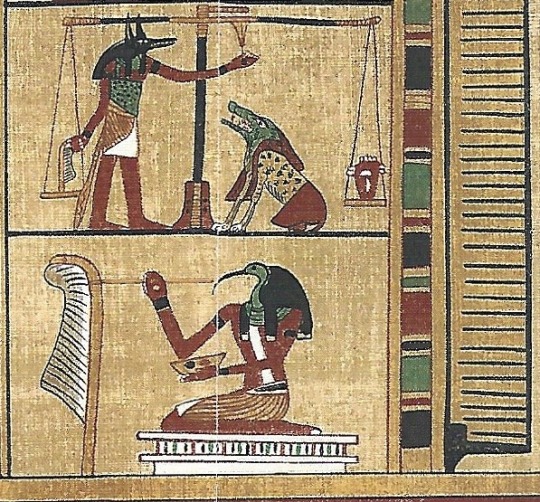
Everybody please look at these two drawings of Anubis and Ammut and of Thoth painting a feather from The Papyrus of Ani.
#The book of the dead#The papyrus of Ani#egyptian mythology#egyptian gods#Thoth#anubis#ammut the devourer#Ammit the devourer#Anpu#Inpu#ancient egypt stuff#no id#undescribed#Djehuty
383 notes
·
View notes
Text
About 𓇋𓈖𓊪𓅱𓃣 (Anubis)' personality:
So with the upcoming Egyptian story by Remy (KCD's author) and the fact that Anubis is the god of death, I fear that Remy will butcher him and misportray him by giving him a nasty "bad boy" or bigoted personality like Amrit's (and since RC has seen that sells and Remy has said she knows nothing about Egypt, this doesn't seem that impossible). This is why I want to talk about Anubis' actual personality according to the legends. So, let's start:

Anubis (or Inpu, 𓇋𓈖𓊪𓅱𓃣) was a god with a complex personality. He was often depicted as a calm and serious figure, who was deeply committed to his duties as the protector of the dead. At the same time, he was known to be a powerful and fearsome deity who could bring punishment to those who did not follow the rules of the afterlife. Despite this, Anubis was seen as a kind and gentle god who helped guide the souls of the deceased to the afterlife, as well as to navigate the afterlife and find their place among the gods.
As a compassionate god who cared for the souls of the dead, Anubis was responsible for weighing their hearts against a feather, to determine whether they were worthy of entering the afterlife or not. Despite being associated with death and transformation, Anubis was not a malevolent or sinister deity, but rather a guide and protector.
His personality was also characterized by his wisdom, intelligence, and fairness, often described as a stern and mysterious figure with a powerful presence. He had a measured, thoughtful and stoic demeanor, and was considered to be a fair and impartial judge, who would not tolerate any deceit or wrongdoing. He embodied solemnity and justice and was also associated with loyalty, devotion, and courage.
All in all, Anubis was seen as a wise and powerful deity, with a deep understanding of the mysteries of life and death. His multifaceted personality reflected his role as a guide and protector of the dead, embodying both kindness and power in equal measure.
As you can see, Anubis was far from being a "bad boy" or from being a nasty bigot with inflated ego like Amrit so portraying him like that would be like doing him dirty. Based on the descriptions of his personality Anubis sounds more like Ratan or Ivo Martin in some ways. I truly hope Remy does her research well and doesn't butcher any of the Egyptian gods this time, like she did with goddess Kali.
#romance club#egyptian mythology#anubis#mythology#god anubis#romance club game#gods of egypt#inpu#egyptian gods
129 notes
·
View notes
Text

Anubis, Inpu, Inpw, Jnpw, or Anpu
God of funerary rites
Protector of graves
Guide to the Underworld
Usually depicted as a canine or a man with a canine head
Consort of Anput and Nephthys
#happy color#colouring#anubis#inpu#inpw#jnpw#anpu#egyptian pantheon#egyptian gods#egyptian mythology#egyptian deities#canine
52 notes
·
View notes
Text

Are there still active OoO enjoyers
Anywho take my favorite character Inpu
#digital art#artists on tumblr#art#digital sketch#fan art#fanart#mcyt fanart#mcytblr#origins of olympus#Inpu#OoOinpu#origins of Olympus Inpu#OoO Inpu#minecraft rp#minecraft roleplay
33 notes
·
View notes
Text
I don’t know if anybody’s mentioned this yet, but I’ll put it here.
I found a little online shrine for Inpu where you could put offerings and stuff! I figured it would be nice to share for people who can’t have an altar themselves or something.
16 notes
·
View notes
Text
Deadly fall: Anubis
ANUBIS
Category: Egyptian mythology
Everybody knows Anubis, the Egyptian god of the dead – he is one of the most famous deities of the Nile. And yet do you really know Anubis? Many false ideas were spread about him…
Already a false idea is his very name. “Anubis”. While it is the name most people knew for centuries, and the name people still use today, “Anubis” is the name the Ancient Greeks gave this deity: its Egyptian name was “Inpu” (or “Anpu” depending on how you write it). This ancient Egyptian god with a black canine head was a deity associated with death and its various aspects: graves, corpses, the underworld, etc…
Due to its ancient nature and his prominence in art, legends and religions, it is widely assumed and believed that in early Egyptian times Anubis was the god of the Underworld, or the lord of the dead, THE big deity of the afterlife, before the figure of Osiris appeared in the Middle-Kingdom and “overthrew” Anubis, replacing him as the ruler of the Duat (the Egyptian underworld). But despite losing this prominence among the deities of death, Anubis still stayed a very important figure with numerous important jobs.
Anubis’ two most prominent and oldest functions were as a protector of the dead. He was the guardian of graves and watched over cemeteries – he was seen as a deity of the west, because the dead were buried on the western side of the Nile and Anubis dwelled there to protect their corpses. He was the god of the necropolis, and tombs had prayers to Anubis engraved on them. Anubis also literally protected corpse through mummification, as he was the spirit of the embalming rooms and burial chambers, and the divine embalmer.
When the figure of Osiris rose into prominence and crafted a whole set of stories and legends around him, these primary functions of Anubis were translated into the Osiris-myth. For example, legend said that Anubis was the one who helped Isis embalm the corpse of her husband Osiris, or restore it after Set cut Osiris’ body into little pieces: it might have been the first act of mummification in the world's history according to some texts. A legend also claimed that Set tried to maim the corpse of Osiris by turning into a leopard, but Anubis protected the body by using a hot iron rod (which left the dark spots on the leopard’s body) – and after defeating the beast, Anubis flayed Set’s leopard body to wear his skin as a warning against all those that would try to desecrate the dead (which is why the priests that presided over funerals wore leopard skins).
A second set of roles for Anubis, that rose into prominence alongside of Osiris, was his function as a guide and agent of the Underworld: Anubis was a psychopomp deity who guided the souls of the dead into the afterlife, and up to the feet of Osiris’ throne. There, Anubis performed his other job, “Guardian of the Scales”: in front of Osiris’ throne was a scale on which the heart of the deceased (holding all the actions of their past life) was weighed in front of the feather of Ma’at, the embodiment of truth, justice and morality. Anubis was the one who did the weighing and announced the outcome of the process: if the heart was good, it would be lighter than Ma’at and the dead would access to the heavenly afterlife of the Duat. If the heart was filled with evil actions and intentions, it would be heavier than the divine feather, and the deceased would be thrown into the maw of Ammit, a monster able to devour souls.
In term of representations, Anubis is a canine entity – either a fully canine creature, either a man with a canine head. Most commonly this head is considered and seen as the one of a jackal, due to the pointy ears. Why jackals? It might seem weird as jackals were one of the threats of the deserts and one of the biggest corpse-eaters of Egypt: due to the wide number of these scavengers in the deserts, if you buried your dead in graves too shallow, the jackals would devour it. But the Egyptians had a “fight fire with fire” logic, a variation of the apotropaic system : their protective and benevolent deity were depicted as the most fearsome and dangerous beasts the Egyptian could fight, because only predators could fight and scare away your enemy, and thus Anubis as a jackal was on equal part with the scavengers he had to fight. Now, there is a slight debate, as wild dogs were also known to haunt the deserts and so maybe Anubis’ head was that of a wild dog… but most commonly, it is a jackal.
It should be noted that if Anubis’ head (or body when he is in full animal form) is black, it is not as a reference to the original animal he is based on. Black was his color for a symbolic reason: black was the color corpses took after they were treated in the funeral rites (due to the use of natron, and the substances uses on the bandages for the mummification) – but it was also the color of the fertile soil of the Nil, and thus black showed life-in-death, rebirth-in-the-afterlife for the Egyptians.
Due to Anubis’ long history and his shift from a lord of the dead to an employee of Osiris, his family and relationships also tended change. In his earliest incarnations, Anubis was said to be a son of Ra, the supreme sun-god, sometimes with Nephthys as a mother: other texts claimed he was the son of either the cow-goddess Hesat or the cat-goddess Bast. But by the time Osiris rose into prominence, Anubis became the illegitimate son of Nephthys and Osiris. The Osirian myth said that Nephthys was the wife of Set but seduced Osiris and had from him Anubis, but she abandoned the baby out of fear of what Set would do to it. Isis, Osiris’ wife, upon discovering the affair, that Nephthys had tricked Osiris into sleeping with her by taking Isis’ shape, and that the goddess had abandoned her child behind, decided to adopt the little dog-god, that she named Anubis and treated as her own son. This complex legend got simplified in later times, to the point people started to treat Anubis as Isis’ legitimate son.
The Egyptians loved “divine triads”, and always gave to gods a companion and a child : Anubis’ wife was thus invented as Anput (who is literally just a female Anubis), and he had with her a daughter called Kebechet, the embodiment of the embalming fluid. Another figure related to Anubis (and quite fascinating in himself) is Wepwawet, a possible brother, twin or double of Anubis, who basically looked like him but with a white head instead of a black one.
- - - - - - -
As with all the Egyptian gods, Anubis found a new “audience” in Greece when Egypt became a Hellenized country. On one side, the Greeks found an echo between the jackal-god of the Egyptian underworld and Cerberus in the realm of Hades, and on the other they considered him to be the Egyptian equivalent of their own psychopomp god, Hermes. This resulted in a cult of “Hermanubis” rising in the Ptolemaic period, with as its religious center Cynopolis, the “city of the dogs” – and Hermanubis was so popular that he still existed in medieval and Renaissance time (though he had moved from worship to alchemical belief and hermetical literature).
But in modern days, and mostly thanks to American media, Anubis started to gain a bad reputation, in a similar way to Hades: people started to see him as your local “evil demonic deity of death” due to his animal head, and his association with Set kind of made people project Set’s evil onto him. This stereotype is mostly destroyed today, but it was quite prominent at some point.
33 notes
·
View notes
Text

one of my characters for a work in progress game called simpder. his name is inpu
#my oc art#my ocs#drawing#inpu#simpder#my art#oc#hes a god#a god of a mirage of things#like how greek gods could b the god of many things at once#his defining thing is the inbetween and present
2 notes
·
View notes
Text

Es solo un primer concepto.
Anubis (cuyo nombre egipcio es Inpu) es el guardián de las tumbas asociadas con la muerte y el más allá en la religión del Antiguo Egipto, señor de la necrópolis y patrón de los embalsamadores, representado como un chacal o un perro salvaje, o como un hombre con cabeza de un chacal Era el dios de la momificación.
----------------
It's just a first concept.
Anubis (whose Egyptian name is Inpu) is the guardian of the tombs associated with death and the afterlife in Ancient Egyptian religion, lord of the necropolis and patron of embalmers, depicted as a jackal or wild dog, or as a man with the head of a jackal He was the god of mummification.
4 notes
·
View notes
Text

This card was poking out, so maybe someone needs to see it. Didn't feel like it was for me.
The overall vibe lately has been judgement. Morals are of extra importance lately. It is hard to have them sometimes. But also some people flagrantly act evil or vile as well.
#ancient egypt#oracle cards#judgment#inpu#anubis#wisdom of ancient egypt oracle deck#spirituality#deities
2 notes
·
View notes
Text

I am so jazzed to learn about the existence of two different dog headed psychopomp gods
#There are probably more honestly#At least I feel like there should be considering how dogs are often guides for people#The dream is to find enough dog psychopomp gods to fill the version of the meme with 8 spidermen pointing at each other#egyptian mythology#aztec mythology#anubis#xolotl#anpu#inpu#ancient egypt stuff#ava has thoughts#mythology
44 notes
·
View notes
Photo
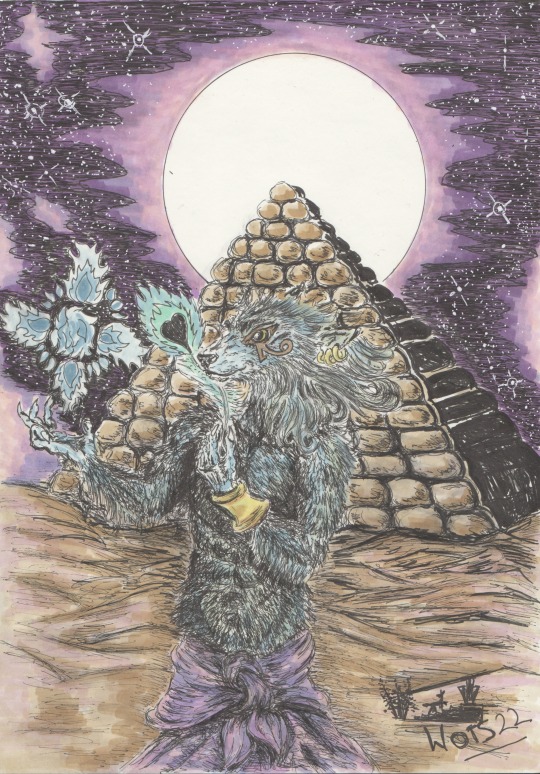
Anubis judging a soul.
5 notes
·
View notes
Text
Anubis and his strange Sinner


1 note
·
View note
Text

195 notes
·
View notes
Text
I AM MISSING MY CHILDREEEENNNNNNNNNNNNNNN AAAAAAAAAAAAAAAAAAAAAAAAA



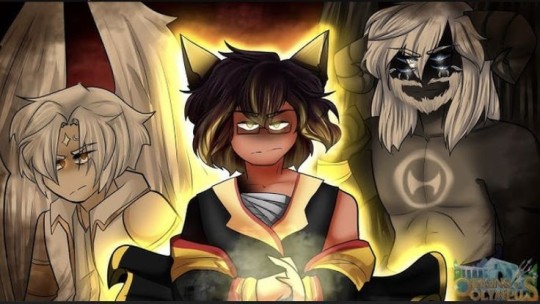

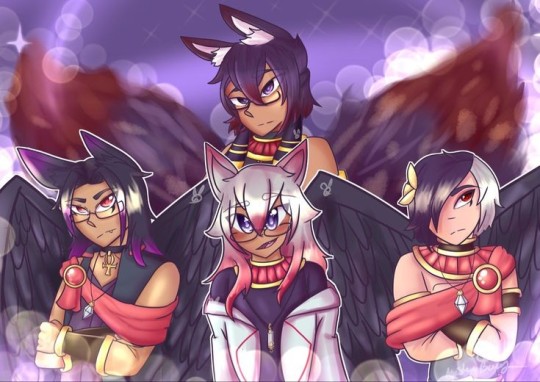

AAAAAAAAAAA *CRIES IN NOT OWNING A SHOWTIME STEVE PLUSHIE AND JUST NEEDING ORIGINS OF OLYMPUS MERCH-*
#currently drawing Inpu-#origins of olympus#thefamousfilms#tff#minecraft roleplay#Minecraft rp#OwTreyalp roleplays#my hero origins#fnaf roleplay#fnaf minecraft roleplay#I MISS MY BLORBOS-#Glamrock bryan#showtime Steve#alien talks
47 notes
·
View notes
Text
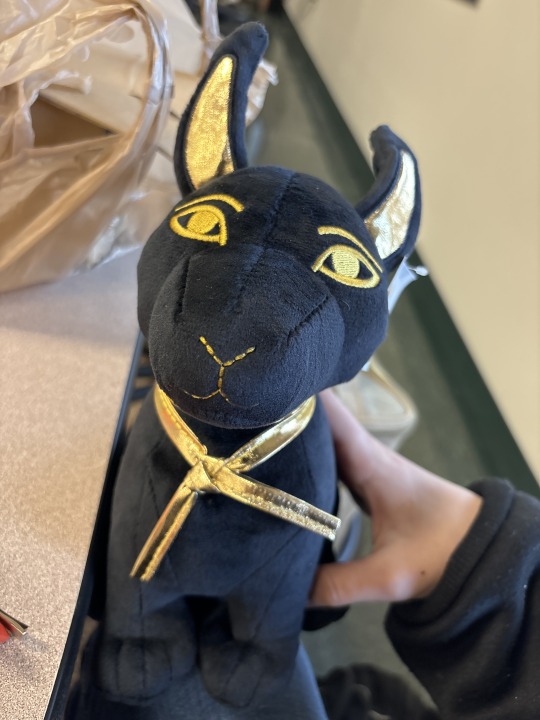
I’VE GOT AN EMOTIONAL SUPPORT INPU NOW GUYS!! :)
I also have a pretty cool statue and a coloring book from that friend. It has some interesting depictions, including Geb with a goose head?
I’ve been getting a lot of Inpu stuff for this Christmas and I had my lock screen already changed to Inpu (and an Inpu phone case!!). I know it’s simply explained as Inpu being arguably the most popular of the Netjeru and being what you’d probably first think of when talking about Ancient Egypt or whatever, but either way I think I should say hi. :)
Might do me some good, as I haven’t been doing very well mentally and I’ve been trying to work on opening up more to the Netjeru and people.
Prayer and stuff would do a lot for me if I went back into it- though, it was pretty hard to just talk about a singular serious issue in my diary.
Dua Inpu! Dua Netjeru!
8 notes
·
View notes
